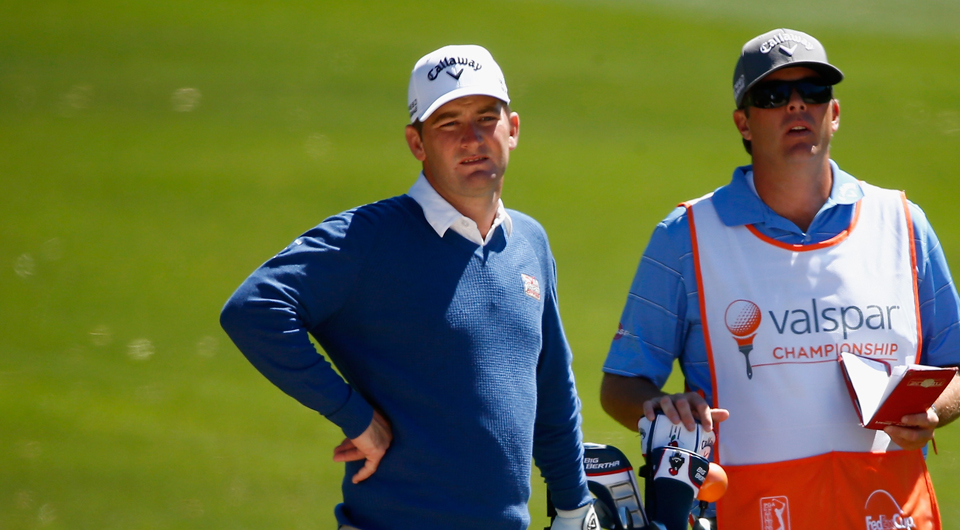Golf News and Current Articles
Monday, March 31, 2014
10 Rounds with the Karsten TR
Friday, March 28, 2014
Getting There -- the Hall of Fame
10 Rounds with the B330RX
Thursday, March 20, 2014
5 Things: Ishikawa, Merrick 3 back of Scott at API

With Tiger Woods withdrawing Tuesday, Adam Scott was left as the headliner of this week's Arnold Palmer Invitational. Thursday, he didn't disappoint, shooting 10-under 62 to take a three-shot lead on Ryo Ishikawa and John Merrick.
SPRING IS HERE ! RIGHT ?
 SPRING IS HERE !! Right ??
SPRING IS HERE !! Right ??Well it is finally here, Spring starts today at 12:57 PM and quite frankly not a moment to soon for me. I suggest everyone get outside take a big gulp of air and say"Welcome Golf Season", then get the heck out on the course even for just nine holes to shake the rust off....
Tri-State Golfer is here for you as the season starts to give you all of the up to date news and notes about everything golf in the Tri-State area.
Click here to visit our website ...........
Wednesday, March 19, 2014
- Tiger withdraws from Bay Hill more......
- Snow melting is on and Golf will be back soon ......
- Time to get your game in gear, get to the range to be ready ......
- 14 Year old makes back to back hole in ones more.....
* Follow Tri-State Golfer on Twitter, Facebook
visit us at www.tristategolfer.com
Tuesday, March 18, 2014
10 Rounds with the JetSpeed
Spring Training Is Not Just For Baseball !
 |
| Spring Training for your Golf Game is Now ! |
Thursday, March 13, 2014
Tour Tracker: 4-way tie for Valspar lead

Matt Every took the lead early at the PGA Tour's Valspar Championship on Thursday near Tampa -- tied in the afternoon by Greg Chalmers, Danny Lee and Pat Perez. Recap the first-round highlights here!
Tuesday, March 11, 2014
10 Rounds with...the Adams Tight Lies
In the early years of Adams Golf, founder Barney Adams struggled to make a go of it until he figured out a way to fill one of recreational golfers’ biggest needs…a club they could hit 180 yards from most any lie.
Unlike touring professionals, amateurs didn’t then (and don’t now) hit long irons well or consistently so a long iron — indeed any club — they could hit with confidence would improve their scoring and enjoyment of the game.
Adams solution was to turn the traditional clubhead upside down.
It was still the same shape but rather than the weight being concentrated towards the top of the head Adams concentrated it near the sole, lowering the center of gravity which of course made it able to hit a ball from the fairway or rough. He also made the clubface a lot deeper which helped for solid contact.
The result was the Adams Tight Lies fairway wood which rocketed the tiny club company to the top of the category and as Adams said, “After all those years made us into an overnight sensation.”
Today Barney Adams is no longer with his old company. After becoming publically traded and with some initial success, Adams Golf couldn’t survive the collapse of the golf business starting in 2008 and was bought while in bankruptcy by the present owners TaylorMade-adidas Golf.
Since then research and development at Adams has been kept separate from the much larger parent so I was looking forward with some anticipation of putting the new Tight Lies fairway into play.
The idea of the “10 Rounds with…” series is to give readers a report of an objective experience with a particular club over an extended period of time — no mere rewriting of press releases passing for analysis or half a dozen swings on the range masquerading as actual time on the course.
So having said all that my opinion of the new Tight Lies is extremely positive.
The Tour 18 degree model instantly complemented my 13 degree 3-wood and fit nicely in with the 21 degree 3-iron I am using.
It gets the ball up in the air with almost unbelievable ease and over 10 rounds I only found one lie in the rough (3-plus inches of Florida’s finest Bermuda trying to hit it 175-yards over a bush) that the Tight Lies couldn’t handle. In case it’s of interest, that particular shot the club got the ball out and it came out straight but the grass was too heavy for me to advance it more than 25-yards.
The Tight Lies also was a champ at hitting shots from fairway bunkers. On two occasions with over 180-yards of carry (including once carry over water), it got the ball out cleanly and set me up to make a par when I probably deserved something higher after those two drives.
There are two models of the new Tight Lies (regular $200 & Tour $230), both have the crown and sole slots that Adams pioneered with the Tour model have a slightly smaller head, deeper face and is biased to lower launch and lower spin.
Tight Lies in this most current of reincarnations is a very good club and deserves consideration by golfers of any skill level.
Tom Watson’s image and product images courtesy of Adams Golf
Thursday, March 6, 2014
Woods 2 over at WGC-Cadillac; back 'a lot better'

While his back felt much better, Tiger Woods played 10 holes in 2 over par before play was halted due to darkness Thursday at the WGC-Cadillac Championship.




















